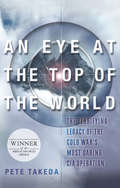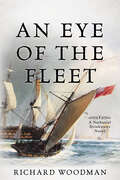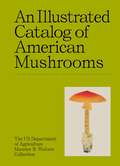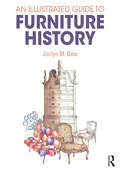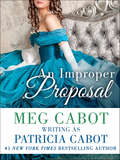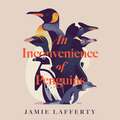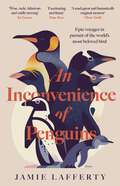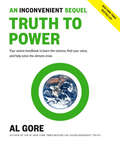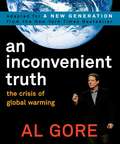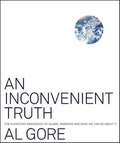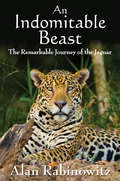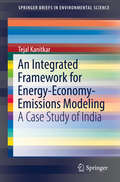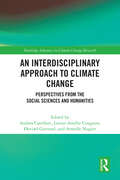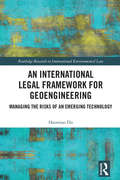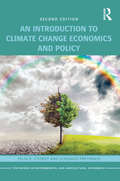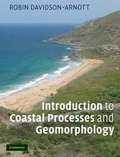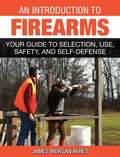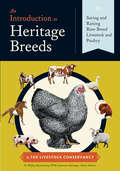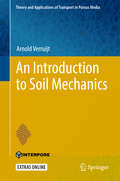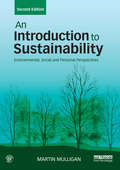- Table View
- List View
An Eye at the Top of the World: The Terrifying Legacy of the Cold War's Most Daring CIA Operation
by Pete TakedaAt some point during the inhumanly cold Himalayan winter straddling 1965 and 1966, a peculiar collection of box-shaped objects -- one sprouting a six-foot, insect-like antenna -- plummets nine thousand feet down the sheer flanks of a remote peak. Ripped from its moorings by an avalanche, the jumbled apparatus slides down a funnel-shaped hourglass of hard snow and shoots over a black cliff band, careening a vertical distance six times the height of the Empire State building. The boxes come to rest on the glacier at the mountain's base. One, an olive-drab casing the size of a personal computer, begins to sink. Then, trailing a robotic dogtail of torn wires, it slowly burns through the snow, melting into solid blue glacial ice, eventually disappearing beneath the surface, and never seen again. No one actually witnessed this event. But as you read these words, nearly four pounds of plutonium -- locked in the glacier's dark unknowable heart -- are almost certainly moving ever closer to the source of the Ganges River. Eye at the Top of the World, provides a harrowing present-day account of Takeda's expedition to solve the mystery of Nanda Devi.
An Eye of the Fleet: A Nathaniel Drinkwater Novel (Nathaniel Drinkwater Novels)
by Richard WoodmanNathaniel Drinkwater's life at sea begins with the HMS Cyclops' capture of the Santa Teresa during Admiral Rodney's dramatic Moonlight Battle of 1780. Subsequently, Drinkwater's courage and initiative are put to the test as the Cyclops pursues American privateers threatening British trade and is later dispatched to the swamps of South Carolina, where many lives are lost both at sea and ashore.Gradually, Drinkwater matures into a capable and self-assured sailor. As he contends with enemy forces, the tyranny of the Cyclops' midshipmen, and the stark contrast between the comfort of home life and the brutality of naval service, he finds strength and sustenance in the love of his beloved Elizabeth.
An Illustrated Catalog of American Fruits & Nuts
by US Department of Agriculture Pomological Watercolor CollectionA kaleidoscopic celebration of the USDA&’s pomological collection, offering an engaging, biophilic meditation upon the sweetest of the earth&’s produce. The United States Department of Agriculture Pomological Watercolor Collection encompasses over 7,500 botanical watercolor paintings of evolving fruit and nut varieties, alongside specimens introduced by USDA plant explorers from the late 19th and early 20th centuries. Assembled between 1886 and 1942, the collection&’s remarkable, botanically accurate watercolors were executed by some 21 professional artists (including nine women). Authored largely before the widespread application of photography, the watercolors were intended to aid accurate identification and examination of fruit varietals, for the nation&’s fruit growers. Documenting the transformation of American pomology, the science of fruit breeding and production, and the horticultural innovations accountable for contemporary fruit cultivation and consumption, the USDA&’s collection offers fascinating anthropological and horticultural insights concerning the fruits we ecstatically devour, and why.
An Illustrated Catalog of American Mushrooms
by US Department of Agriculture Maurice B. Walters CollectionA fascinating exploration of the USDA&’s national fungus collection, offering readers an intimate portrait of America&’s elusive fungi species. The United States Department of Agriculture&’s National Fungus Collections is one of the world&’s largest mycological institutions, housing over a million species of fungi. Mycologist Maurice Burke Walters&’s collection of fungi is also housed here—a fascinating collection revealing the often-solitary forays of the rather-retiring Walters, the then-nascent science of mycology, and the evolving interest of the USDA in documenting the nation&’s fungi species (over 10,000 named species are found in the US). Alongside beautiful botanical illustrations, are field notes, observational sketches, and occasionally enigmatic photographs of fungi (within USDA laboratories, in the wild, and elsewhere). This book contains an eclectic assortment of illustrated and documented fungi species drawn from Walters collection. Encompassing contemporary meditations on ecology, mycology and pharmacology, the still-unexplored landscape of fungi knowledge is memorably demystified, perhaps, for practicing mycologists and enthusiastic foragers alike.
An Illustrated Guide to Furniture History
by Joclyn M. OatsAn Illustrated Guide to Furniture History provides upper-level students and instructors with an alternative visual analytical approach to learning about furniture history from Antiquity to Postmodernism. Following an immersive teaching model, it presents a Nine-Step Methodology to help students strengthen their visual literacy and quickly acquire subject area knowledge. Moving chronologically through key periods in furniture history and interior design, such as the Renaissance, the Arts and Crafts Movement, and Modernism, it traverses Europe to America to present a comprehensive foundational guide to the history of furniture design. Part I addresses furniture within the context of the built environment, with chapters exploring the historical perspective, construction principles, and the categorization of furniture. In Part II, the author visually depicts the structural organization of the methodological process, a three-category framework: History, Aesthetics, and Visual Notes. The chapters in this part prepare the reader for the visual analysis that will occur in the final section of the book. The book is lavishly illustrated in full color with over 300 images to reinforce visual learning and notation. A must-have reference and study guide for students in industrial and product design, interior design, and architecture.
An Improper Proposal
by Meg Cabot Patricia CabotA fearless young woman scandalously pursues the captain of her heart in this adventuresome Victorian romance.England, 1830. Swashbuckling beauty Payton Dixon has two passionate dreams—to sail the open sea on her own clipper ship, and to capture the love of Captain Connor Drake. But both seem impossibly out of reach, since her beloved captain is about to marry another, and worse, he’s been given her ship as a wedding present from her traitorous father.Out to prove she has right on her side, Payton manages to unleash a scandal and ignite all sorts of trouble. As for Drake, he’s surprised to discover that the girl he’s grown up with has transformed into the most alluring woman he’s ever encountered.
An Inconvenience of Penguins: Epic voyages in pursuit of the world's most beloved bird
by Jamie Lafferty'Jamie Lafferty embarks on an epic quest - in which the journey is at least as entertaining as the end result' - Stephen Moss, author of Ten Birds That Changed the World'Highly entertaining and gloriously obsessional' - Philip Hoare, author of Leviathan'A wise, rude, hilarious and oddly moving account' - Ed Caesar, author of The Moth and the Mountain~ ~ ~The problem started, as problems often do, with a penguin.From Kings and Emperors to Macaronis and Rockhoppers, penguins are one of the most immediately recognisable animals on Earth. Yet for all that familiarity, what do we really know about them? An Inconvenience of Penguins follows award-winning travel writer Jamie Lafferty as he visits all 18 species in a bid to understand the birds and their extraordinarily varied habitats a little better. On voyages to some of the world's most inaccessible and challenging landscapes, he recounts the history of our unique relationship with the world's most popular bird, telling stories of the penguins, but also the people and places around them.From getting stranded in the Galapagos to marching through African guano fields, and leading photography groups in the Antarctic to taking psychedelics on the Falklands, this is a birding quest like no other. Along the way Lafferty relives the experiences of early polar explorers, for who penguins were perplexing mysteries, welcome companions and even occasional meals, and meets the modern penguin lovers trying to save their fragile environments.Featuring cameos from a wide cast of characters including Ernest Shackleton, Charles Darwin, and Sir Francis Drake, as well as beautiful photographs of each penguin species, An Inconvenience of Penguins is part-love letter to and part-biography of these remarkable creatures.
An Inconvenience of Penguins: Epic voyages in pursuit of the world's most beloved bird
by Jamie Lafferty'Jamie Lafferty embarks on an epic quest - in which the journey is at least as entertaining as the end result' - Stephen Moss, author of Ten Birds That Changed the World'Highly entertaining and gloriously obsessional' - Philip Hoare, author of Leviathan'A wise, rude, hilarious and oddly moving account' - Ed Caesar, author of The Moth and the Mountain~ ~ ~The problem started, as problems often do, with a penguin.From Kings and Emperors to Macaronis and Rockhoppers, penguins are one of the most immediately recognisable animals on Earth. Yet for all that familiarity, what do we really know about them? An Inconvenience of Penguins follows award-winning travel writer Jamie Lafferty as he visits all 18 species in a bid to understand the birds and their extraordinarily varied habitats a little better. On voyages to some of the world's most inaccessible and challenging landscapes, he recounts the history of our unique relationship with the world's most popular bird, telling stories of the penguins, but also the people and places around them.From getting stranded in the Galapagos to marching through African guano fields, and leading photography groups in the Antarctic to taking psychedelics on the Falklands, this is a birding quest like no other. Along the way Lafferty relives the experiences of early polar explorers, for who penguins were perplexing mysteries, welcome companions and even occasional meals, and meets the modern penguin lovers trying to save their fragile environments.Featuring cameos from a wide cast of characters including Ernest Shackleton, Charles Darwin, and Sir Francis Drake, as well as beautiful photographs of each penguin species, An Inconvenience of Penguins is part-love letter to and part-biography of these remarkable creatures.
An Inconvenience of Penguins: Epic voyages in pursuit of the world's most beloved bird
by Jamie Lafferty'Jamie Lafferty embarks on an epic quest - in which the journey is at least as entertaining as the end result' - Stephen Moss, author of Ten Birds That Changed the World'Highly entertaining and gloriously obsessional' - Philip Hoare, author of Leviathan'A wise, rude, hilarious and oddly moving account' - Ed Caesar, author of The Moth and the Mountain~ ~ ~The problem started, as problems often do, with a penguin.From Kings and Emperors to Macaronis and Rockhoppers, penguins are one of the most immediately recognisable animals on Earth. Yet for all that familiarity, what do we really know about them? An Inconvenience of Penguins follows award-winning travel writer Jamie Lafferty as he visits all 18 species in a bid to understand the birds and their extraordinarily varied habitats a little better. On voyages to some of the world's most inaccessible and challenging landscapes, he recounts the history of our unique relationship with the world's most popular bird, telling stories of the penguins, but also the people and places around them.From getting stranded in the Galapagos to marching through African guano fields, and leading photography groups in the Antarctic to taking psychedelics on the Falklands, this is a birding quest like no other. Along the way Lafferty relives the experiences of early polar explorers, for who penguins were perplexing mysteries, welcome companions and even occasional meals, and meets the modern penguin lovers trying to save their fragile environments.Featuring cameos from a wide cast of characters including Ernest Shackleton, Charles Darwin, and Sir Francis Drake, as well as beautiful photographs of each penguin species, An Inconvenience of Penguins is part-love letter to and part-biography of these remarkable creatures.
An Inconvenient Sequel: Your Action Handbook to Learn the Science, Find Your Voice, and Help Solve the C limate Crisis
by Al GoreA New York Times bestseller!The follow up to the #1 New York Times bestselling An Inconvenient Truth and companion to Vice President Al Gore’s new documentary, An Inconvenient Sequel: Truth to Power, this new book is a daring call to action. It exposes the reality of how humankind has aided in the destruction of our planet and delivers hope through groundbreaking information on what you can do now.Vice President Gore, one of our environmental heroes and a leading expert in climate change, brings together cutting-edge research from top scientists around the world; approximately 200 photographs and illustrations to visually articulate the subject matter; and personal anecdotes and observations to document the fast pace and wide scope of global warming. He presents, with alarming clarity and conclusiveness (and with humor, too) that the fact of global climate change is not in question and that its consequences for the world we live in will be assuredly disastrous if left unchecked. Follow Vice President Gore around the globe as he tells a story of change in the making. He connects the dots of Zika, flooding, and other natural disasters we’ve lived through in the last 10+ years—and much more. The book also offers a comprehensive how-to guide on exactly how we can change the course of fate. With concrete, actionable advice on topics ranging from how to run for office to how to talk to your children about climate change, An Inconvenient Sequel will empower you to make a difference—and lets you know how exactly to do it. Where Gore’s first documentary and book took us through the technical aspects of climate change, the second documentary is a gripping, narrative journey that leaves you filled with hope and the urge to take action immediately. This book captures that same essence and is a must-have for everyone who cares deeply about our planet.
An Inconvenient Truth: The Crisis of Global Warming (Adapted)
by Jane O'Connor Al GoreFormer Vice President Al Gore's New York Times #1 bestselling book is a daring call to action, exposing the shocking reality of how humankind has aided in the destruction of our planet and the future we face if we do not take action to stop global warming. Now, Viking has adapted this book for the most important audience of all: today's youth, who have no choice but to confront this climate crisis head-on. Dramatic full-color photos, illustrations, and graphs combine with Gore's effective and clear writing to explain global warming in very real terms: what it is, what causes it, and what will happen if we continue to ignore it. An Inconvenient Truth will change the way young people understand global warming and hopefully inspire them to help change the course of history. .
An Inconvenient Truth: The Planetary Emergence of Global Warming and What We Can Do About It
by Al GoreOur climate crisis may appear to be happening slowly but in fact it is happening very quickly, and has become a true planetary emergency.
An Indomitable Beast: The Remarkable Journey of the Jaguar
by Alan RabinowitzThe jaguar is one of the most mysterious and least-known big cats of the world. The largest cat in the Americas, it has survived an onslaught of environmental and human threats partly because of an evolutionary history unique among wild felines, but also because of a power and indomitable spirit so strong, the jaguar has shaped indigenous cultures and the beliefs of early civilizations on two continents. In An Indomitable Beast: The Remarkable Journey of the Jaguar, big-cat expert Alan Rabinowitz shares his own personal journey to conserve a species that, despite its past resilience, is now on a slide toward extinction if something is not done to preserve the pathways it prowls through an ever-changing, ever-shifting landscape dominated by humans. Rabinowitz reveals how he learned from newly available genetic data that the jaguar was a single species connected genetically throughout its entire range from Mexico to Argentina, making it unique among all other large carnivores in the world. In a mix of personal discovery and scientific inquiry, he sweeps his readers deep into the realm of the jaguar, offering fascinating accounts from the field. Enhanced with maps, tables, and color plates, An Indomitable Beast brings important new research to life for scientists, anthropologists, and animal lovers alike. This book is not only about jaguars, but also about tenacity and survival. From the jaguar we can learn better strategies for saving other species and also how to save ourselves when faced with immediate and long-term catastrophic changes to our environment.
An Integrated Framework for Energy-Economy-Emissions Modeling: A Case Study of India (SpringerBriefs in Environmental Science)
by Tejal KanitkarThis book combines three different energy-economy-emissions modeling methodologies into one Integrated Modeling Framework (IMF) in an attempt to fill gaps in current modeling research as it applies to developing countries. Through the analysis of existing mathematical models, including large macro-economic models and technology-explicit energy models, the work proposes planning methodologies for developing countries that face challenges on their economy and infrastructure due to climate change. The three modeling methodologies discussed in the chapters are a decomposition analysis of trends in emissions intensity of GDP, linear programming techniques to determine optimum energy supply pathways given various resource and emissions constraints, and an input-output analysis to evaluate the impact of energy policies on income and equity. After a brief introduction to the history of the development of energy studies and the linkages between energy, economic, and environmental systems, the book delves into the component methodologies of the IMF and their intended outcomes. The decomposition analysis is intended to gauge the energy intensity of GDP and the structural composition of the economy to provide a basis on which scenarios are constructed in the following two methodologies. The linear programs are meant to develop a methodology to determine energy options under a variety of scenarios that capture the technical and economic characteristics of the power sector of developing countries. Lastly, the input-output analysis aims to build a methodology through which energy policy decisions can be understood and quantified to ensure the best possible impacts on developing economies and societies. Those who will be interested in this book include policy makers, academics, and students and professionals working on energy studies and energy-economy modeling.
An Interdisciplinary Approach to Climate Change: Perspectives from the Social Sciences and Humanities (Routledge Advances in Climate Change Research)
by Armelle Nugier Andrea Catellani Louise-Amélie Cougnon Øyvind GjerstadThis book offers a comprehensive overview of the ways in which research and perspectives from the social sciences and humanities can be combined for a more effective understanding of climate change and its impacts. Climate change affects all aspects of life, influencing personal lifestyle choices and political perceptions. Beyond legal and political measures, the engagement of individuals and local communities has become essential for necessary systemic change. Understanding the complex human and social dynamics is key to achieving real change, in favour of a resilient and low-carbon future.This book highlights the theoretical and practical contributions of the social sciences and humanities in understanding how humans perceive and respond to climate change, and the ways in which they can be combined to fight climate disruption and its effects. These interdisciplinary approaches draw upon fields such as communication sciences, linguistics, psychology, anthropology, educational sciences, management studies, and philosophy, to explore the nexus between climate change and human and social dynamics in individual, collective, and political actions.Drawing on a wide range of interesting case studies, the book highlights opportunities for collaboration between disciplines by combining methodological and theoretical components and synthesizing the research results. Ultimately, the book demonstrates that a more effective collaboration between the social sciences and humanities is required to fully understand the complexities of our relationship with climate change, and to pave the way to a real ecological transition. The book will be of use to scholars, students, researchers, and practitioners interested in communication studies, psychology, linguistics, sociology, philosophy, management, educational studies, transition studies, and connected fields.
An International Legal Framework for Geoengineering: Managing the Risks of an Emerging Technology (Routledge Research in International Environmental Law)
by Haomiao DuGeoengineering provides new possibilities for humans to deal with dangerous climate change and its effects but at the same time creates new risks to the planet. This book responds to the challenges geoengineering poses to International Law by identifying and developing the rules and principles that are aimed at controlling the risks to the environment and human health arising from geoengineering activities, without neglecting the contribution that geoengineering could make in preventing dangerous climate change and its impacts. It argues first that the employment of geoengineering should not cause significant environmental harm to the areas beyond the jurisdiction of the state of origin or the global commons, and the risk of causing such harm should be minimized or controlled. Second, the potential of geoengineering in contributing to preventing dangerous climate change should not be downplayed.
An International Spent Nuclear Fuel Storage Facility: EXPLORING A RUSSIAN SITE AS A PROTOTYPE
by National Research Council of the National AcademiesAs part of a long-standing collaboration on nuclear nonproliferation, the National Academy of Sciences and the Russian Academy of Sciences held a joint workshop in Moscow in 2003 on the scientific aspects of an international radioactive disposal site in Russia. The passage of Russian laws permitting the importation and storage of high-level radioactive material (primarily spent nuclear fuel from reactors) has engendered interest from a number of foreign governments, including the U.S., in exploring the possibility of transferring material to Russia on a temporary or permanent basis. The workshop focused on the environmental aspects of the general location and characteristics of a possible storage site, transportation to and within the site, containers for transportation and storage, inventory and accountability, audits and inspections, and handling technologies.
An Introduction to Climate Change Economics and Policy (Routledge Textbooks in Environmental and Agricultural Economics)
by Elissaios Papyrakis Felix R. FitzRoyThe 2nd edition of An Introduction to Climate Change Economics and Policy explains the key scientific, economic and policy issues related to climate change in a completely up-to-date introduction for anyone interested, and students at all levels in various related courses, including environmental economics, international development, geography, politics and international relations. FitzRoy and Papyrakis highlight how economists and policymakers often misunderstand the science of climate change, underestimate the growing threat to future civilization and survival and exaggerate the costs of radical measures needed to stabilize the climate. In contrast, they show how direct and indirect costs of fossil fuels – particularly the huge health costs of local pollution – actually exceed the investment needed for transition to an almost zero carbon economy in two or three decades using available technology.
An Introduction to Coastal Processes and Geomorphology
by Robin Davidson-ArnottWritten for undergraduate students studying coastal geomorphology, this is the complete guide to the processes at work on our coastlines and the features we see in coastal systems across the world. Accessible to students from a range of disciplines, the quantitative approach of this book helps to build a solid understanding of wave and current processes that shape coastlines. The resulting processes of erosion, transport and deposition and the features they create are clearly explained, with over 400 illustrations and photographs. From sandy beaches to coral reefs, the major coastal features are related to contemporary processes and to sea-level changes over the past 25,000 years. Key equations describing or predicting measurements from instruments used to map these processes are all presented in this wide-ranging overview. Davidson-Arnott completes this teaching package with online material that brings the subject to life, including videos of coastal processes and virtual field trips.
An Introduction to Environment, Society and Sustainability
by Paul Sutton Helen HazenThis timely and innovative book delves into the complex interplay of human activities and natural limits in generating today’s sustainability challenges. By contrasting the pressures of growing populations with ecological footprints associated with consumption, the volume navigates the contested terrain where human societies generate environmental impacts.Adorned with illustrative figures, examples and case studies throughout, this book presents insightful analysis of ecological, economic, technological, and social justice responses to the challenges faced by human civilization, including land degradation, climate change, pollution, and overexploitation of natural resources. Many of these issues are wicked problems, characterized by incomplete information, multiple stakeholders, and contested approaches to addressing them. In simple terms, sustainability issues are an interplay between population growth and rising consumption, which are placing impossible demands on finite resources. Potential solutions to the crisis are split between green growth approaches that emphasize technology and institutional capacity to guide economic growth in more sustainable ways, and degrowth approaches that call for a fundamental rethinking of the way we structure society and generate value. This book emerged from a student seminar where undergraduate and graduate students highlighted sustainability topics of concern, helped consider their framing, and then assisted with co-writing several of the chapters. The volume encourages readers to consider structural questions that underpin sustainability dilemmas, and begins with four theoretical frameworks for understanding sustainability issues: ideas from the natural sciences, the population/consumption debate, economic frameworks, and ethical approaches. It then uses a systems approach to apply these theoretical ideas to complex global systems such as the atmosphere, oceans, and agriculture.This volume will be of pivotal interest to students, scholars and academics in the fields of environmental studies, environment and society, human geography and environmental geography, as well as those with an interest in these areas more generally.
An Introduction to Firearms: Your Guide to Selection, Use, Safety, and Self-Defense
by James Morgan AyresLearn everything you need to know to own and shoot firearms responsibly in this newly updated guide.Owning a firearm is a big responsibility. There's more to it than just walking into a gun shop and walking out with a gun. In addition to knowing state laws and regulations, you'll need to have the confidence to choose the right firearm for your needs and then learn to use it safely and effectively.An Introduction to Firearms goes beyond the basics, introducing you to the many uses of the gun, such as hunting, sporting competition, and self-defense, and includes resources for additional information on legal aspects of gun ownership, safety considerations, and gun manufacturers.Chapters of interest include coverage on: Where to Buy and Where to Shoot Hunting with Your Gun Care and Cleaning of Your Gun Gun Cabinets, Cases, and Safes Kids and Guns Defensive Shooting Skills Federal and State Gun Laws An Introduction to Firearms is the best guide available to you to ensure you have the right gun, whether you intend to use it for big game or self-defense. It's your right to own a firearm and your duty to use it responsibly.
An Introduction to Heritage Breeds: Saving and Raising Rare-Breed Livestock and Poultry
by Alison Martin D. Phillip Sponenberg DVM Jeannette BerangerDeveloped for the particular needs of the working farm, heritage breeds have proved invaluable to small-scale agricultural production for centuries. This comprehensive guide explains why conserving heritage breeds remains important and how they often can be a better choice for the modern farmer than conventional animals. With profiles of heritage poultry, sheep, cattle, and more, you’ll learn how to select and successfully raise the breed that is right for your specific needs. Enjoy the benefits of resilient livestock while preserving genetic diversity for future generations.
An Introduction to Severe Storms and Hazardous Weather
by Jeffrey B. HalversonThis book presents a deep and encompassing survey of severe weather in all its forms. An Introduction to Severe Storms and Hazardous Weather is an exciting new textbook that allows students to learn the principles of atmospheric science through the drama, exhilaration, and even tragedy of severe weather.Balancing breadth and depth, Jeffrey B. Halverson adeptly combines a short, accessible introduction to the basic principles of meteorology with detailed coverage on large- and small-scale weather hazards. He draws on specific up-to-date case studies from North America to illustrate the cause of meteorological events including hurricanes, heavy snow and ice, floods, and tornadoes. Unlike existing books on the market, Halverson delves deep into the societal impacts of these events, drawing on examples from agriculture, utility infrastructure, and commercial aviation. Each chapter also features high-quality, customized color artwork by Thomas D. Rabenhorst that helps to enhance and embed learning.Thorough in its scope, and written with an impeccable focus on the science, this book will be an essential resource for introductory undergraduate courses in severe weather, natural hazards, and extreme meteorology. It is also an excellent supplemental textbook for courses on meteorology and atmospheric science.
An Introduction to Soil Mechanics (Theory and Applications of Transport in Porous Media #30)
by Arnold VerruijtThis textbook offers a superb introduction to theoretical and practical soil mechanics. Special attention is given to the risks of failure in civil engineering, and themes covered include stresses in soils, groundwater flow, consolidation, testing of soils, and stability of slopes. Readers will learn the major principles and methods of soil mechanics, and the most important methods of determining soil parameters both in the laboratory and in situ. The basic principles of applied mechanics, that are frequently used, are offered in the appendices. The author's considerable experience of teaching soil mechanics is evident in the many features of the book: it is packed with supportive color illustrations, helpful examples and references. Exercises with answers enable students to self-test their understanding and encourage them to explore further through additional online material. Numerous simple computer programs are provided online as Electronic Supplementary Material. As a soil mechanics textbook, this volume is ideally suited to supporting undergraduate civil engineering students.
An Introduction to Sustainability: Environmental, Social and Personal Perspectives
by Martin MulliganAn Introduction to Sustainability provides students with a comprehensive overview of the key concepts and ideas which are encompassed within the growing field of sustainability. The fully updated second edition, including new figures and images, teases out the diverse but intersecting domains of sustainability and emphasises strategies for action. Aimed at those studying the subject for the first time, it is unique in giving students from different disciplinary backgrounds a coherent framework and set of core principles for applying broad sustainability principles within their own personal and professional lives. These include: working to improve equality within and across generations; moving from consumerism to quality of life goals; and respecting diversity in both nature and culture. Areas of emerging importance such as the economics of prosperity and wellbeing stand alongside core topics including: · Energy and society · Consumption and consumerism · Risk and resilience · Waste, water and land. Key challenges and applications are explored through international case studies, and each chapter includes a thematic essay drawing on diverse literature to provide an integrated introduction to fundamental issues. Housed on the Routledge Sustainability Hub, the book’s companion website contains a range of features to engage students with the interdisciplinary nature of sustainability. Together these resources provide a wealth of material for learning, teaching and researching the topic of sustainability. This textbook is an essential companion to any sustainability course.
